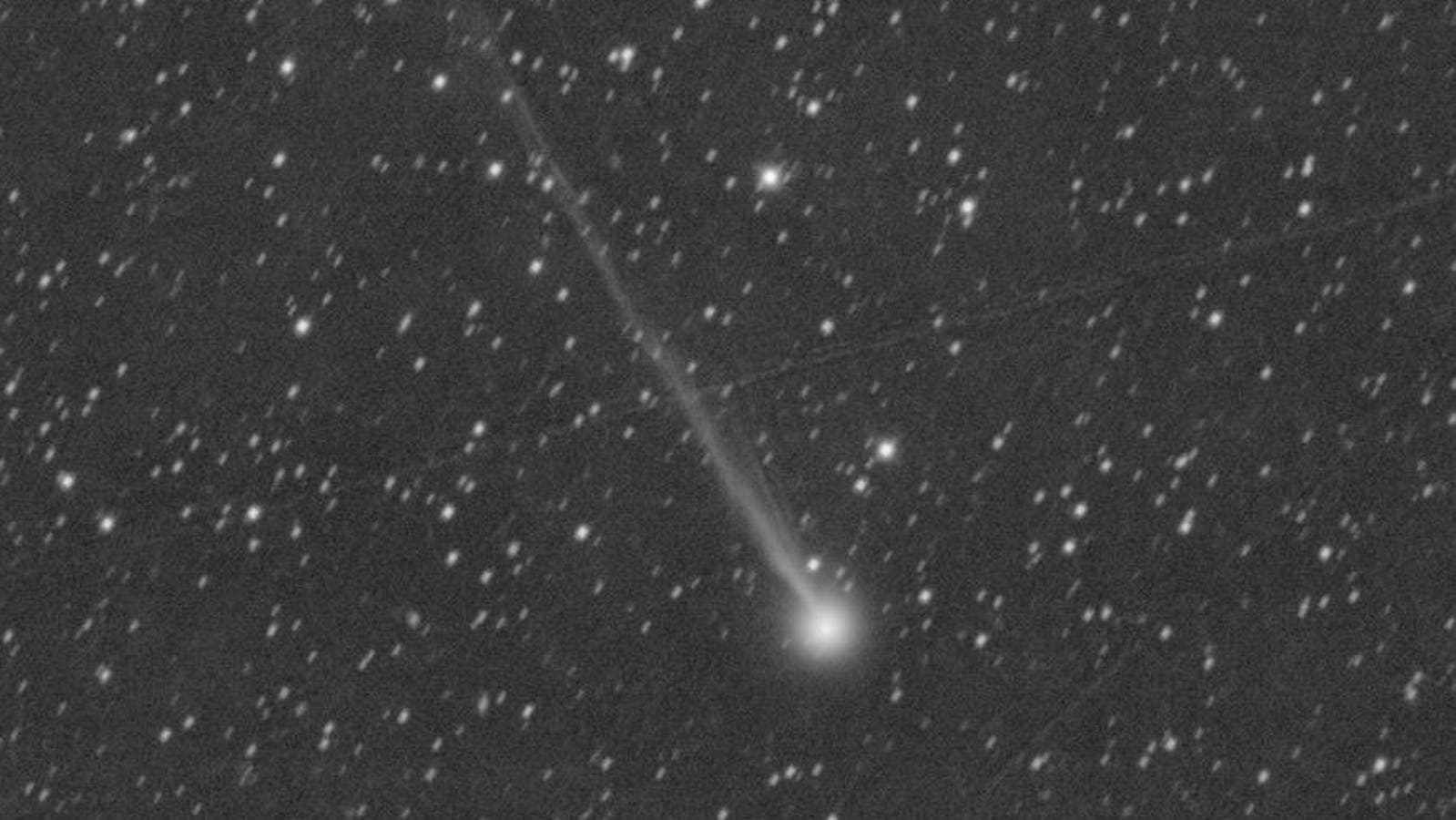Topline
A newly discovered comet has been spotted in the night sky. Tentatively called comet SWAN25F, it’s currently visible in binoculars and is expected to reach its brightest on May 1, 2025.
Comet SWAN25F, as imaged on April 8, 2025, by Gianluca Masi at The Virtual Telescope Project in … More Manciano, Italy.
Key Facts
Found in late March, comet SWAN25F has significantly increased in brightness, but it’s not visible to the naked eye. Only those with telescopes and large binoculars (around 10x50mm) can observe it now.
Now 8th magnitude, it can be found during twilight above the northeastern horizon an hour before sunrise only from the Northern Hemisphere. It’s just below Scheat, one of the bright corner stars of the Great Square of Pegasus. Virtual planetarium stargazing app Star Walk can be used to find it.
It should be visible from the Northern Hemisphere until mid-April, when it moves into the constellation Andromeda, according to Stargazing. After that, it will be lost in twilight as it approaches the sun.
Comet SWAN25F will reach perihelion — the closest it gets to the sun — on May 1, 2025. After that date, it will emerge into the post-sunset evening night sky, but it will only be seen from the Southern Hemisphere.
After perihelion, it’s expected to reach 5th magnitude — the limit for human vision, but good for watching through binoculars.
Astronomers Are Observing This Comet Closely
“The comet shows a nice ion tail, with fine structures,” wrote Gianluna Masi, an astronomer at The Virtual Telescope Project, who imaged the comet on April 8 from Manciano, Italy. Astrophotographer Mike Olason has been posting new images from Tucson, Arizona, while experienced comet imagers Michael Jäger and Gerald Rhemann have also been posting photos from Weißenkirchen, Austria.
Why Comet Swan25f’s Name Will Change
Comet SWAN25F is not its official designation because its discovery has not been officially announced. While its orbital path is being refined — with the help of amateur astronomers worldwide — it will keep this initial name. Once that work is complete, it will be officially announced and given a new name by the International Astronomical Union’s Minor Planet Center.
Background
Comet SWAN25F was discovered in late March by astronomer Michael Mattiazzo, Australia. Already relatively close to the sun, it was detected in images from the SWAN Instrument aboard NASA’s Solar and Heliospheric Observatory. The lateness of its discovery is likely due to a sudden outburst and, thus, a spike in its brightness. SOHO, a satellite that studies the sun, was launched almost 30 years ago.
Further Reading
ForbesI Just Saw And Photographed The Comet — Here’s How You Can TooBy Jamie Carter
ForbesYour Ultimate Guide To Finding The Comet Every Night This Week — Before It FadesBy Jamie Carter








